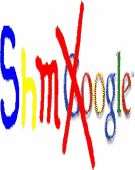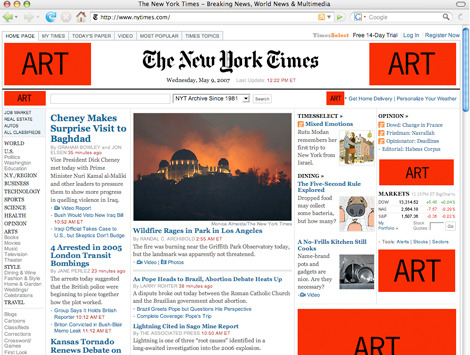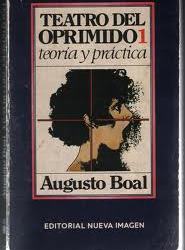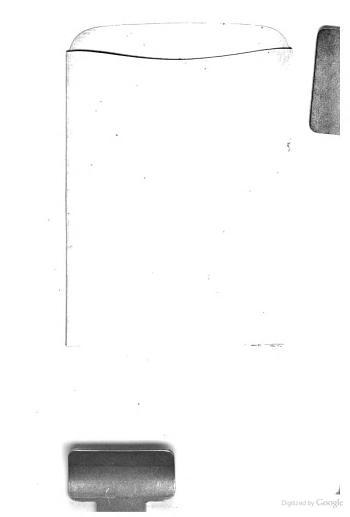Video
Jacques Ranciere explores the relationship between a spectator watching a performance and the actors that are performing, but claims the role of a spectator to be paradoxical in his article “The Emancipated Spectator.” Although it is necessary to have spectators to put on a performance, Ranciere believes that being a spectator is a bad thing because it involves looking at a spectacle (Ranciere, 1).” This action is morally wrong because he believes that just looking is “the opposite of knowing… and the opposite of acting (Ranciere, 2).” This passive action is inexcusable and the spectator must be active instead of remaining captured. “The spectator is separated from the capacity of knowing just as he is separated from the possibility of acting (Ranceir, 3).” Therefore, Ranciere desires a theatre where the spectators are active and, similar to Augusto Boal’s Theatre of the Oppressed, pass the distinction of the spectator and actor to become a spect-actor. Until the spectator becomes completely involved in the performance by judging or engaging with the actors, the spectator will not be emancipated.
In Jaron Lanier’s “The Unbearable Thinness of Flatness”, Lanier speaks about how even though times have changed and technology has continued to accelerate, many things remain the same. This “flatness” in the digital world is caused because “the whole point of connected media technologies was that we were supposed to come up with new, amazing cultural expression (Lanier, 9)” instead of reverting back to the past. “In the pre-digital world, we already had all kinds of shlock you now find on the net (Lanier, 2).” Most of these materials have been “recycled” which has been causing problems for new media since no new leading technologies have emerged. Examples are of Wikipedia, which is basically just another encyclopedia with the difference is that it is digitally formatted, and Linux, which is only an update of its older version. The lack of innovation and originality has made new media bland, and software engineers are “stuck” in this realm of “flatness.”
The last article is of Michel Foucault’s “Panopticism”, which is based on a prison building Panopticon designed by Jeremy Bentham. In this area, prisoners are able to be constantly supervised without noticing due to a backlighting effect. Each of these prisoners are individually locked in their own cell, where supervisors can watch them though the wide-open windows. The purpose is “to induce in the inmate a state of conscious and permanent visibility that assures the automatic functioning of power (Foucalt, 5).” Foucalt relates this concept of panopticism to a governing idea behind a disciplinary society. This “invisible surveillance” can be used in multiple scenarios, whether it be a prison, school, workplace, or even an insane asylum. “The panoptic schema makes any apparatus of power more intense; it assures its efficacy by its preventative character, its continuous functioning and its automatic mechanisms (Foucalt, 9).”
0 notes
Text
Theses
1) A Museum of New Media Art should not be held to certain limitations of what it can hold/preserve, since this form of art is almost limitless.
2) A Museum of New Media Art can be virtual or real, but if it’s virtual it can always be open to spectators at any time from around the world via the internet.
3) A Museum of New Media Art can be directed towards all audiences, from young children to the elderly, across different cultures, lifestyles and beyond.
4) A Museum of New Media Art can hold artworks related to social, economic or political topics; together they can show a different perspective on our modern day life.
5) A Museum of New Media Art should have a vision of which direction it is trying to pursue, while also embodying an educational mission of helping its customers think “out-of-the-box” and to expand their horizons.
6) A Museum of New Media Art should archive their artworks so that no piece is lost or deleted, while continually adding new artworks from the past and present.
7) A Museum of New Media Art should encourage their customers to participate and create their own pieces of work.
8) A Museum of New Media Art should give credit to the artist by releasing their biography, but should leave the meaning behind the work to open interpretation.
9) A Museum of New Media Art should not restrict thoughts or views; it should host an environment where people can share their opinions freely.
10) A Museum of New Media Art should hold a myriad of artworks – videos, digital art, computer animations, computer graphics, interactive art, computer robotics, virtual art and much more – in order to help the spectators understand the wide spectra of new media art.
0 notes
Text
Hyperlinks
Technology has revolutionized our lifestyles as it has become a significant part of our culture. For the modern American, going through our daily lives without the use of a laptop to update documents or access the internet, even via our mobile phones, would be preposterous. New technologies have surged since 1980 and have completely changed our standard of living exponentially. Art has gradually acclimated to these new gadgets and has changed over time as well. The development of New Media Art, a relationship between art and computer technology, has widely become popular around the globe.
The two articles, “New Media from Borges to HTML” by Lev Manovich and “New Media Art and the Gallery in the Digital Age” by Charlie Gere both show the transition of how new media art has developed and the its large impact on today’s society. The hyperlinks in these documents allow the reader to quickly be referred to the background information and meaning of the terms the author presents in the text, instead of individually looking up this information one-by-one. An example is shown by Charlie Gere when he mentions how the first computers used to be extremely large and were only used for number crunching. SAGE, the Strategic Air Ground Environment, was a nuclear early warning defense system that was developed by the military which shifted computers to become more interactive involving visual interfaces that together set the precedent for modern day computers. The hyperlink gives the reader a direct source of information that can be quickly accessed by just one “click.”
This easy convenience matches one of Manovich’s eight propositions. “New Media as Faster Executions of Algorithms Previously Executed Manually or Through Other Technologies” clearly shows that hyperlinks are the “faster executions” which allow the reader to access specific information rapidly. Wikipedia, an online encyclopedia, uses thousands of hyperlinks when searching through data which allows the reader to jump from one topic to the next with ease. I disagree with Gere’s assertion that “The gallery has an important role to play in making this art visible, not just now but also in the future, when such work will be part of art history” because to simply put it, times have changed. In our technological world, books and newspapers are becoming less popular since both are now able to be accessed online via the internet. The huge archive of books on Google allows a copy of each book to be retained even if every book is physically destroyed. Art can be archived the same way and virtual museums can be the source to find these works in the future, so that art history will be maintained.
0 notes
Photo

Open-Loop by Tiffany Holmes
Created in 2004
Research has found that many areas of downtown Chicago are under constant video surveillance. Because of this, Tiffany Holmes has set up Open Loop in order to create a source of all locations and types of these cameras. People of the city and visitors to the site can help by adding new camera locations and more, while also being able to see where the documented cameras are placed around downtown Chicago.
http://rhizome.org/artbase/artwork/24799/
http://archive.rhizome.org:8080/artbase/24799/open-loop.org/
http://www.open-loop.org/
0 notes
Photo

Shmoogle by Tsila Hassine
Created in 2005
Have to search for something on Google? Well if you're not feeling lucky use Shmoogle! While it does have the same search engine as Google, Shmoogle randomizes the order of the results so that the order will never be the same. This application disobeys the Search Engine Optimization (SEO) and neutralizes page rank which allows an equal chance of exposure for all sites related to the topic of search.
http://rhizome.org/artbase/artwork/32161/
http://www.missdata.org/cgi-bin/shmoogle_form.cgi
0 notes
Photo

Add-Art by Steve Lambert
Created in 2008
Add-Art is a plug-in specifically for the Firefox browser which removes normal advertisements, just like an ad-blocker. However, this application goes even further by replacing these adds with contemporary art images found on a curated database. Your browser will have a new look similar to an art gallery!
http://add-art.org/
1 note
·
View note
Video
vimeo
Interactive Robotic Painting Machine by Ben Grosser
Created in 2011
Ben Grosser built this interactive robot which can paint whatever it wants based on the decisions that it makes. This artificially intelligent system can in fact listen to its environment which influences what it will paint. It can eavesdrop on conversations or even go as far to be influenced by music. Grosser set up an activity where a violinist performs a song while the robot evaluates what to paint based on the music. This machine also can perform as a musical instrument by sending pitched cords back into the painting.
http://rhizome.org/artbase/artwork/53194/
http://bengrosser.com/projects/interactive-robotic-painting-machine/
0 notes
Text
Manifesto for New Media Curators
There is a large spectra of what encompasses that which can be called art; from the theatre to paintings to now modern day new media art, people can express their true inner feelings with creativity. As centuries have passed, art has transformed along with time while adapting to society’s needs and culture. Now presently in the technological era, new media art has become widely popular as people all around the globe engage with some sort of technology in their everyday lives. The ubiquitous presence of cheap and affordable technologies, such as laptops and cell phones, has complemented the recent surge in the popularity of new media art.
The logic of the art world and the logic of new media art are exact opposites. While art is unique and one-of-a-kind, new media art is made into numerous copies that are all different from each other through author-user symbiosis. In the United States, it has taken over ten years for the cultural periphery of new media art to become “mainstream.” In fact, countries other than the US first engaged with the new technologies of the modern day computer and such, even though these devices were first released on our soil. This occurred because the slow assimilation and high cost of these gadgets in other countries allowed people to reflect on them much more. In other words, people in the United States did not give these new technologies as much credit due to its availability, compared to the rare amount of computers that were owned overseas. In addition, this new form of art was not given much attention here due to its lack of funding, while many countries in Europe spent a lot in this sector. New media conventions had been meeting around the world since the late 80s, such as ZKM in Karlsruhe and others.
As we look at the past and take a deeper look into different eras and societies, art is a big factor that defines a specific period of time. Not only does it define our past, but it presents a view into our future as well. Our current galleries show the older art and the transitions that were made over time, and those artworks are given so much respect because of its age and more. This is one reason why New Media Art is presently receiving a lot of criticism. This innovative work is not given as much credit due to its young age and its pressing transition into a new era of art. Over time, new media art will become much more accepted, and also respected once a new era of art takes over.
New Media Art brings forth a new era because this type of work does not require a physical gallery to be placed in. For the first time, artworks can be appreciated just as much if seen from a virtual space. Most of these works are created using computer technologies, so it is perfectly fine if they are presented in a virtual museum or gallery. This is especially true because the thousands of copies that are each different from each other in a minute way can all be seen without worrying about the limitations of physical space. By having these artworks curated on a virtual archive, a limitless amount of works can be uploaded. New Media Artworks such as memes, are created in gigantic numbers every day even though they are all slightly different. The popularity of new media art has also largely increased due to “sharing” across multiple social networking sites like Facebook, Twitter, Tumblr, and more.
http://on1.zkm.de/zkm/e/
http://en.wikipedia.org/wiki/New_media_art
http://en.wikipedia.org/wiki/Meme
http://www.facebook.com/
0 notes
Photo


Dr. Augusto Boal was raised in Rio de Janeiro and attended Columbia University where he studied chemical engineering during the late 1940s and early 1950s. Although he studied engineering, he is mostly known for revolutionizing the theatre of acting. After finishing his studies, he came back to Brazil to work with the Arena Theatre in Sao Paulo where he began to experiment and try new things. He began to stage plays of dramatic situations that occur from everyday life such as parents trying to help their kids on drugs, a person getting evicted from their house, etc. and try to find solutions to these problems. One of the most known acts he brought to the theatre was the invention of the spect-actor, where members of the audience were allowed to stop the play and enact their own ideas by working through these scenarios of oppression towards change. He encouraged theatre to be an active relationship between the actors and the audience and helped people find creative ways to solve their life problems. Dr. Augusto Boal also invented the “Invisible Theatre” where these theatrical acts could spring up anywhere and those who were witnessing it weren’t clued in that it was a performance.
Boal’s acts were perceived to be dangerous to the government as he was seen to be a cultural activist. One day in 1971 he was kidnapped off the street, arrested, tortured, and eventually exiled out of the country. He ended up bringing his creativity to Europe and established several theatres there. He called these theatres the “Theatre of the Oppressed.” After a political change in Brazil, Augusto Boal returned to his native land in 1986 and continued his work. He died in 2009 at the age of 78 from respiratory failure after a long battle with leukemia.
Augusto Boal Daily Loaf: http://cltampa.com/dailyloaf/archives/2009/05/04/augusto-boal-theater-activist-dead-at-78#.T9Gg_cVQDyL
Augusto Boal Brecht Forum: http://brechtforum.org/abouttop
Theatre of the Oppressed: http://www.ptoweb.org/boal.html
Augusto Boal Wikipedia: http://en.wikipedia.org/wiki/Augusto_Boal
5 notes
·
View notes
Photo

Title: How to Live at the Front: Tips for American Soldiers
Author: Hector Macquarrie (Second Lieutenant, Royal Field Artillery)
Copyright, 1917, by J.B. Lippincott Company
Fifth Edition (1918)
Printed in Philadelphia, U.S.A.
Original From:The University of Wisconsin
Link: http://books.google.com/books?id=Xv-eAAAAMAAJ&pg=PA101&dq=British+subject:%22World+War%22&hl=en&sa=X&ei=8eXXT966DqX02QXFifCMDA&ved=0CEAQ6AEwAQ#v=onepage&q=British%20subject%3A%22World%20War%22&f=false
0 notes